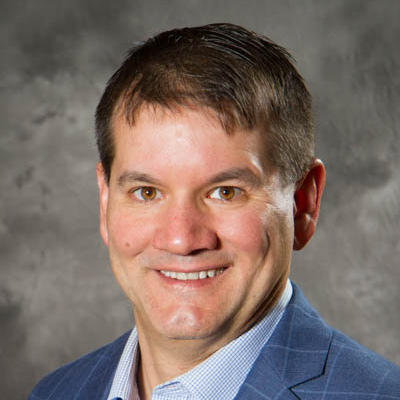In January 2019, Clemson defeated Alabama 44-16 in the College Football Playoff championship game. As a Clemson football fan, I was thrilled with the result. I was also surprised, as was everybody else who pays attention to college football. Some commentators expected Clemson to win, but nobody anticipated the blowout fashion of how the game unfolded.
The two teams have a rich recent history. Alabama and Clemson have met in the College Football Playoff for the last four years. They split the first two championships in very close games, and Alabama soundly handled Clemson in the semi-finals in 2018 on the way to another championship season. Alabama entered the playoffs in January amid discussion of being the best team ever.
The overwhelming loss to Clemson deserved some explanation and there was plenty of commentaries that followed. Much of it occurred on a sports-focused cable television channel that employs a variety of experts who announce sporting events and provide insight on sports-related news. As the result was not what I expected, I was more interested than usual in the experts’ dissection of the game and what led to the outcome. There were a variety of different opinions expressed, but they all seemed rational despite their contradictions. There was even commentary on what the game meant for the future of college football. How do you decide who is right in a sea of different but seemingly valid opinions?
Do you know what would have been much more interesting and compelling for me? Imagine reading a sports article two years prior that predicted Clemson handily beating Alabama in the January 2019 championship game, and not only that but that Clemson would first stumble against Alabama in the 2018 playoffs. Such an incredible prediction would have had to determine Clemson losing mightily with a veteran quarterback but winning the following year with a freshman quarterback, who was a junior in high school at the time of the prediction.
We would all be interested in reading that storyline, even those of us who don’t care about college football. Would we need to verify the author’s credentials to assure he was a college football expert? Of course not. The intricacy and accuracy of the projections would solidify our confidence in his understanding and pique our curiosity about what led to his prediction.
President Trump is generally regarded as being antagonistic towards the ACA, partially due to the political biases of his detractors but mostly due to the things he says.
OK, it’s time to call a time-out. Where is a health insurance guy going with this football stuff? Interestingly, there’s a direct parallel to recent health insurance results that likewise seemed to surprise everyone. On October 22nd, the Centers for Medicare and Medicaid Services (CMS) issued its annual report of health plan choices and premiums in the thirty-eight federal exchange states. It captured attention as it was the second year in a row of benchmark premiums declining and greater insurer participation in the Affordable Care Act (ACA) markets. The surprise element is embedded in the perceived irony of ACA markets reversing direction and becoming more attractive since President Trump assumed office and implemented significant regulatory changes. President Trump is generally regarded as being antagonistic towards the ACA, partially due to the political biases of his detractors but mostly due to the things he says.
Like the football game, the retrospective analysis was immediate, spirited and divergent. Interest was piqued as the results were generally surprising. The Trump administration claimed credit for the purported market improvement. Health and Human Services Secretary Alex Azar said, “The president who was supposedly trying to sabotage the law has been better at running it than the guy (referring to former President Barack Obama) who wrote the law.” Despite the underlying politics, it is clearly plausible that Mr. Azar is correct, but the administration was short on details in this explanation. Most reporters cited the CMS announcement as positive but couldn’t help themselves from mentioning contrasting factors unrelated to the report. Amy Goldstein of the Washington Post went as far as to say “the brightening scenario…creates awkward conflicting messages for senior Trump administration officials”.
On the political side, Senator Ron Wyden simply could not stomach the idea of any Trump policies causing lower premiums or insurers to return to markets, “Trump has spent his presidency waging war against all opportunities to expand coverage and lower premiums in Obamacare. Attributing any improvement to the president is one of the biggest lies yet.” Leslie Dach, Chair of Democrat-aligned Protect Our Care, likewise said that “the administration deserves zero credit for the success of the ACA”. While eliminating credit from President Trump, his detractors made no attempts to logically connect the results with actual policy.
They may not need to. Unfortunately, the natural response in a sea of retroactive spin is to believe what affirms and aligns with pre-conceived biases without a need to know any details. This doesn’t help anyone understand true policy implications. Perhaps many people really don’t care to; they just want confirmation of what they believe and the heck with the truth.
Some of us do care to understand though, so let’s get real here. Why are insurers really returning to markets? Who can we trust to answer this question? In this case, neither the Trump administration nor its detractors articulated a cohesive rationale of why markets are now more attractive. It’s not even clear they really knew the rationale or even thought about it. Who knew and when did they know it?
We will get to that question, but let’s examine the actual results first. In 2017, there number of insurers in ACA markets dropped to 167. In 2018, the number of insurers fell. In 2019 and 2020, the number of insurers grew to 175, exceeding the insurer participation in 2017.
Imagine that there was a report written in 2017 that predicted insurers would leave the market in 2018 based on a new policy but return in 2019 and 2020 in dramatic fashion based on that same policy. Would you be interested in the rationale behind such a prediction if it turned out to be accurate? Would you think that perhaps the prediction was more trustworthy than the after-the-fact politically-based rationalizations? I certainly would.
You have probably figured out that there is such a prediction. I took particular interest in this 2017 report because I published an article on the same subject several weeks prior. The conclusions in the report were generally consistent with mine except for an important and impressive forecast. I anticipated that markets would benefit and become more attractive. The Congressional Budget Office (CBO) and staff of the Joint Committee on Taxation (JCT), collectively “the agencies”, took predictions to a different level.
Let’s look at what the agencies said:
CBO and JCT expect that insurers in some states would withdraw from or not enter the nongroup market because of substantial uncertainty about the effects of the policy on average health care costs for people purchasing plans. In the agencies’ estimation, under the policy, about 5 percent of people live in areas that would have no insurers in the nongroup market in 2018. By 2020, though, insurers would have observed the operation of markets in many areas under the policy and CBO and JCT expect that more insurers would participate, so people in almost all areas would be able to buy nongroup insurance.
To paraphrase, the agencies told the insurance industry “Listen. We understand how this works. In this report, we are going to tell you how this works. However, we do not think you will understand how this works by simply reading this report. After you observe how this works and recognize the benefits, you will take steps to re-enter markets.”
This is quite remarkable. The CBO not only accurately predicted the implications of the policy, but also that insurers would misunderstand the implications and behave in one way, and later change their behavior after an appropriate understanding with the benefit of observation.
Any objective observer truly wanting to understand the 2020 landscape results should read the 2017 report.
The accuracy of the agencies’ predictions and its connection to a certain policy is solid. Any objective observer truly wanting to understand the 2020 landscape results should read the 2017 report, not listen to the politically-biased spin doctors who don’t think about the results until after they occur.
Did the agencies get everything right in their report? No. While the agencies accurately projected insurers exits and re-entry response, their rational expectation (which I encouraged) of consumer response was wise plan selection in response to the policy change.
Because CBO and JCT anticipate that most insurance commissioners would eventually permit insurers to substantially increase the gross premiums for silver plans in the marketplaces and not to do so for other plans, almost all people at other income levels would then buy other plans.
That has not happened; people of all income levels have remained on silver plans. While the agencies expected years of observation for insurers to understand the policy implication, the agencies did not directly anticipate such learning time for consumers. The dynamic results of this are lower silver premiums, translating to lower subsidies and consumers having to pay more.
It’s not fashionable to say this, but ACA markets have been harmed not by President Trump’s policy (which is mechanically beneficial), but rather by consumers’ lack of response to President Trump’s policy. In fairness, the response by insurers and states has been lacking as well and benchmark rates have not risen to an appropriate level relative to other plans irrespective of consumers’ behavior.
This will translate to a challenging open enrollment environment in 2020. In the spirit of this article, remember these challenging dynamics when you hear the spin doctors construct their retrospective narratives on open enrollment results.
If you want to understand ACA implications, don’t listen to the political commentators and their media partners with their retrospective spin. Listen to those who are quietly engaged in the details, who tell you what is going to happen before it does, and aren’t afraid to separate policy implications from underlying political narratives. They don’t work for politicians or politically-affiliated groups; they don’t write for major newspapers; they are not easy to find, but they are out there. If you find them, you will reach a new level of policy clarity amidst endless cycles of political spin. If you reach out to them and you are so inclined, tell them they are prophets. They won’t mind.
About the Author

Any views or opinions presented in this article are solely those of the author and do not necessarily represent those of the company. AHP accepts no liability for the content of this article, or for the consequences of any actions taken on the basis of the information provided unless that information is subsequently confirmed in writing.

